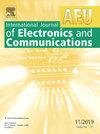Using Denoising Diffusion Probabilistic Models to solve the inverse sizing problem of analog Integrated Circuits
IF 3
3区 计算机科学
Q2 ENGINEERING, ELECTRICAL & ELECTRONIC
Aeu-International Journal of Electronics and Communications
Pub Date : 2025-03-21
DOI:10.1016/j.aeue.2025.155767
引用次数: 0
Abstract
In this paper, we focus on using Artificial Neural Networks (ANNs), particularly diffusion models, to automate the sizing of analog Integrated Circuits (ICs), given the constraints of their performance metrics. Researchers have explored various automation methods, including meta-heuristics and optimization-based approaches, to address this challenge. However, each method presents distinct drawbacks and, at times, yields inefficient results. While studies have made some attempts using ANNs, they commonly face the hurdle of the ill-posed nature of the problem exacerbated by the scarcity of databases for training the models. Therefore, this work introduces a novel approach to automate the design process by leveraging diffusion models to enhance the existing ANNs-based framework and address the limitations of previous methodologies. Specifically, Denoising Diffusion Probabilistic Model (DDPM) to tackle the inverse problem of the analog IC sizing. DDPMs employ a noising and denoising architecture, where they learn to reconstruct input distributions by progressively adding and removing noise. Once trained, the DDPM can generate new data from pure noise. We show that even a simple DDPM can sample sizing solutions in a small amount of time, which is an important steppingstone for future research. Experimental results indicate that our models successfully sized the two tested circuits with an average median error of around 6%, surpassing the state-of-the-art approaches whose error was over 60 to 70% higher. Moreover, by taking advantage of the generative capabilities of our models, we were able to generate points for targets within the dataset, with most of them showing an error below 3%. For the more challenging targets, we managed to find solutions with errors below 10%, while the supervised approaches struggled to achieve errors under 20%.
应用去噪扩散概率模型求解模拟集成电路的尺寸逆问题
在本文中,我们专注于使用人工神经网络(ann),特别是扩散模型,来自动化模拟集成电路(ic)的尺寸,给定其性能指标的约束。研究人员已经探索了各种自动化方法,包括元启发式和基于优化的方法,以应对这一挑战。然而,每种方法都有不同的缺点,有时会产生低效的结果。虽然研究已经尝试使用人工神经网络,但它们通常面临着问题的病态性的障碍,这一障碍由于缺乏用于训练模型的数据库而加剧。因此,这项工作引入了一种新的方法,通过利用扩散模型来增强现有的基于人工神经网络的框架,并解决以前方法的局限性,从而实现设计过程的自动化。具体来说,采用扩散概率模型(DDPM)去噪来解决模拟集成电路尺寸的逆问题。ddpm采用一种去噪和去噪架构,通过逐步添加和去除噪声来学习重建输入分布。经过训练后,DDPM可以从纯噪声中生成新数据。我们表明,即使是简单的DDPM也可以在很短的时间内对解决方案进行取样,这是未来研究的重要基石。实验结果表明,我们的模型成功地测量了两个测试电路,平均中值误差约为6%,超过了目前最先进的方法,其误差超过60%至70%。此外,通过利用我们模型的生成能力,我们能够在数据集中为目标生成点,其中大多数显示的误差低于3%。对于更具挑战性的目标,我们设法找到误差低于10%的解决方案,而监督方法则难以实现误差低于20%的解决方案。
本文章由计算机程序翻译,如有差异,请以英文原文为准。
求助全文
约1分钟内获得全文
求助全文
来源期刊
CiteScore
6.90
自引率
18.80%
发文量
292
审稿时长
4.9 months
期刊介绍:
AEÜ is an international scientific journal which publishes both original works and invited tutorials. The journal''s scope covers all aspects of theory and design of circuits, systems and devices for electronics, signal processing, and communication, including:
signal and system theory, digital signal processing
network theory and circuit design
information theory, communication theory and techniques, modulation, source and channel coding
switching theory and techniques, communication protocols
optical communications
microwave theory and techniques, radar, sonar
antennas, wave propagation
AEÜ publishes full papers and letters with very short turn around time but a high standard review process. Review cycles are typically finished within twelve weeks by application of modern electronic communication facilities.

 求助内容:
求助内容: 应助结果提醒方式:
应助结果提醒方式:


